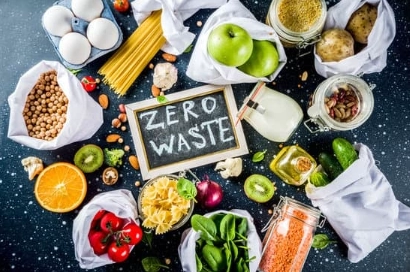
Autore: I&S we care
In our sustainable and natural cosmetics shop, we firmly believe in upcycling and protecting the planet. We use raw materials which, although discarded by the food industry, are rich in beneficial properties for the skin. Fruit peels, for example, are unexpected treasures of nutrients

In 1994, German mechanical engineer Reiner Pilz introduced a revolutionary concept to the world of recycling during an interview for the architecture magazine Salvo. Pilz stated: "I call recycling down-cycling; what we need is up-cycling, thanks to which old products are given greater value, not less."
This approach, known as upcycling, has become a cornerstone in the natural cosmetics industry, transforming unused materials into valuable resources
Upcycling represents a revolution in the cosmetics sector, transforming unused materials into valuable ingredients for beauty products. This process not only reduces waste but also enhances often overlooked resources, such as fruit peels, algae, and pumpkin seeds. Upcycling, unlike traditional recycling, aims to create higher-quality products, thus contributing to a sustainable circular economy. At I&S, we are committed to incorporating upcycled ingredients into our formulas, aiming for maximum efficiency and sustainability.
Join us in this green revolution and do your part for a future that is more respectful of the environment and your skin

The first position in the sustainability sector is contested by two emerging ecological philosophies:
In the cosmetic industry, upcycling implies the reuse of expensive materials from the set of food items that are not used for the final products. A first example was the bucce of the mirtilli, especially obtained via during the production of the marmellata. This treasure is not extremely useful, but also a true treasure.
Soprattutto nell'industria cosmetica thanks to the greatest concentration of polyphenols rispetto alla polpa, which gives you a precious ingredient for the cure of skin.
Generally, all fruit peels are rich in valuable nutrients, ideal for the production of cosmetic products. Let's think, for example, of fruit destined for pulping only because it does not respect the aesthetic standards of sale, such as size, color and shape. To obtain this fruit, resources such as water and soil, in addition to human labor, have already been consumed. Upcycling allows you to give new life to these materials, transforming them into high-quality ingredients for cosmetics.
Another significant example is represented by the algae that often devastate our seas. These algae, transported by currents and accumulated in certain places, are seen as an environmental problem. However, through upcycling, algae are converted into a valuable raw material for the production of cosmetics, thanks to the numerous useful molecules they contain.
These are just a few examples of how we can valorize already available resources through upcycling. This process, an integral part of the circular economy, helps reduce waste and reuse unused materials, lowering management and transportation costs. Upcycling not only protects the Earth's resources but also ensures excellent results in terms of the quality of cosmetic products.
Precious Oils from Dried FruitDried fruit also offers great opportunities for upcycling. The processes of crushing and squeezing the shells of hazelnuts, pistachios, walnuts and almonds produce oils rich in fatty acids, excellent emollients and lipid-forming agents. The dry residues of flours, however, can be used as natural thickeners in cosmetic products.a
However, it is important to recognize that upcycling also involves costs, mainly related to research. It is necessary to understand how to convert these raw materials into functional products for the cosmetics industry. This requires the use of researchers who are experts in the properties of plants and low environmental impact extraction processes, capable of correctly valorising the products obtained.
The inedible parts of vegetables contain phytonutrients that further enhance cosmetic products. From pumpkin seeds, for example, very high quality virgin oils are obtained, while lycopene, a powerful antioxidant, is obtained from the processing of tomatoes destined for pulping.
At I&S, we set ourselves an ambitious challenge: to integrate significant percentages of ingredients derived from upcycling into our formulas, with the aim of reaching 100% raw materials coming from this virtuous process. We are aware that not all products will be able to immediately reach this goal, but we are committed to including the maximum possible quantity of sustainable ingredients, maintaining the functionality and effectiveness of our cosmetics unchanged.
Our personal and entrepreneurial contribution begins with this commitment. We are passionately dedicated to developing products that respect the environment and promote sustainability. We invite our customers to join us in this green revolution, to make a difference together and build a more sustainable future.
Join us in the challenge of saving the planet, one product at a time. Our land and our skin will thank you.

This commitment not only benefits the planet by reducing waste and promoting the intelligent use of resources, but also offers tangible benefits for our customers' skin. Nutrient-rich ingredients and powerful antioxidants, derived from otherwise unused materials, enrich our formulations, ensuring high-quality products
Will you join us in this revolution?